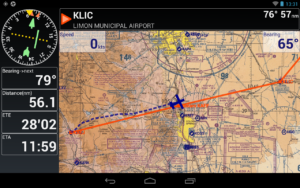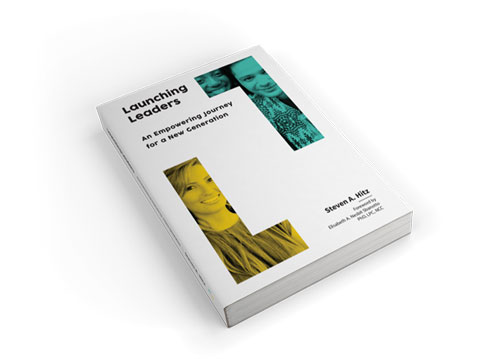It’s an act of “adulthood” to move beyond the plan in your head and heart, to a plan of action for charting your course in life. For many in the rising generation, the act of planning is delayed by a fear of being hemmed in. They want their lives to be as free flowing as possible.
Part of their hesitation is if they make a “life plan,” they could be committed to a path that may be hard to change, or even re-start. Often the launch on their charted course is delayed while they figure out a plan that allows for progress but isn’t too limiting. Many in the older generations have mocked this delay, and yet, this journey is so sacred, all generations should respect this space and the way it is being carved out by each succeeding generation.
Making “plans for life” is better that making a “life plan.” It allows for more free-flowing options along the way. I know of folks who have planned every aspect of their life in detail and have followed that plan with great precision. They live by a comprehensive calendar and are wound up as tight as a garage spring. Perhaps it works for them, but that path doesn’t work for most of the rising generations for a variety of reasons. I respect the fact that Millennials and Generation Z want to create a life of meaning and be able to tap into their passionate desires while keeping all options open as life progresses.
Let’s consider a planning process that embraces the “Millennial Way.” Charting your course and creating your future ought to include a few things that will get you flying in the right direction. I’ll use a personal aviation analogy to make my points.
Envision the Path Before You Take Off
 Years ago, when I was a pilot and had a small plane, I took a trip to Nebraska. Before I took off for the flight from Fort Collins, Colorado to O’Neil Nebraska, I studied the aviation map, weather, and was prepared to recognize waypoints along the way. I knew the course heading I would initially take. Once in the air, things would look different, but for now I was prepared for takeoff. When we spend time to meditate upon our futures and the course we want to take, the mind starts to prepare the heart and soul for the journey. This process is known as visualization and is used by athletes and thought leaders to project their passion and “will” this passion into the act of living into their dreams.
Years ago, when I was a pilot and had a small plane, I took a trip to Nebraska. Before I took off for the flight from Fort Collins, Colorado to O’Neil Nebraska, I studied the aviation map, weather, and was prepared to recognize waypoints along the way. I knew the course heading I would initially take. Once in the air, things would look different, but for now I was prepared for takeoff. When we spend time to meditate upon our futures and the course we want to take, the mind starts to prepare the heart and soul for the journey. This process is known as visualization and is used by athletes and thought leaders to project their passion and “will” this passion into the act of living into their dreams.
Align Your Vision
While creating your OWN future is paramount in charting your course, two key elements ought to be considered in the process. First, have you developed your core values and decided that whatever path you take, those core values are the center of your navigation? If not, start there, first. If you have started this process, then get in the airplane and prepare for flight. Your core values are your flight safety check before takeoff.
Second, recognize the journey you take is not just your own. Your life affects and is affected by those around you—so chart a course that is appreciative of this. Not only does your path affect those around you (otherwise, how could you change the world for the better?), it also is connected to your ultimate destination after this life. This is a truism that makes all good things possible. The God or Supreme Power of the universe is aware of you and is ready to assist in your journey—-which is most likely to happen as you attempt to align your will with His.
Begin Painting with Broad Stokes as You Establish Waypoints
In my early flying days, we didn’t have GPS. We used more antiquated instruments, and also held in our lap an aviation map to recognize things that were visible from ten thousand feet—-railroad tracks, water towers, roads, airports, etc. When I left on my flight for O’Neil Nebraska, I could see on the map where it was. It was about an hour and a half flight. Once I hit my cruising altitude of 10,000 feet, I felt pretty much aligned with my destination.
Then things changed. While my instruments seemed reliable, the visuals I was supposed to be seeing along my path were not evident to me. I quickly had a flying companion looking for landmarks, all the while descending to the destination airport that by now should have been visible. Thankfully, we had one major landmark that could not be mistaken – a large river. I knew the destination airport was next to the river. I headed north and followed the river. I didn’t see the airport yet, but knew it had to take me there. Sure enough, within a few minutes I saw the airport, lowered the landing gear, and landed just before dark.
Think of that landmark, the large river, as representing painting your course with broad strokes initially, and then filling in the details along the way. Consider developing an oil painting. Starting out, a canvas may be covered with base paint, or thick strokes of paint to represent the blue sky, or the brown earth. Then the puffy clouds are painted over the blue sky, or trees or grass over the brown landscape, and so on. Eventually the full picture appears, but not until the finer details have been painted in along the way. The painting all started with broad strokes and foundational colors.
Fly!
While learning to fly, my instructor said repeatedly, if something goes wrong, keep flying the airplane. I was in near panic stage while trying to find my Nebraska destination. My flying companion was perhaps in a worse mental state. My altitude was low, I was low on fuel, the landing gear warning horn was blaring in my ear—meaning I had descended to pattern altitude of 1000 feet and was supposed to put the landing gear down— and it was getting dark.
So many things can change as we fly the course we have charted, but if we can stay aligned with the vision and keep moving forward, the destination is likely closer than we think. The broad strokes we paint in our course will be become the visible landmarks that get us there. The destination could be just another waypoint along a continuous path of progression —another reason to paint initially with broad strokes and allow the inner voice to help us with the finer points along the way.
So let’s allow a space for Millennials, Generation Z, and everyone to chart their own unique course without coercion, giving each individual an opportunity to discover their path, even if the path is visible for only a few steps at a time.
For more on this topic, see chapter 4 in Launching Leaders: An Empowering Journey for a New Generation.





